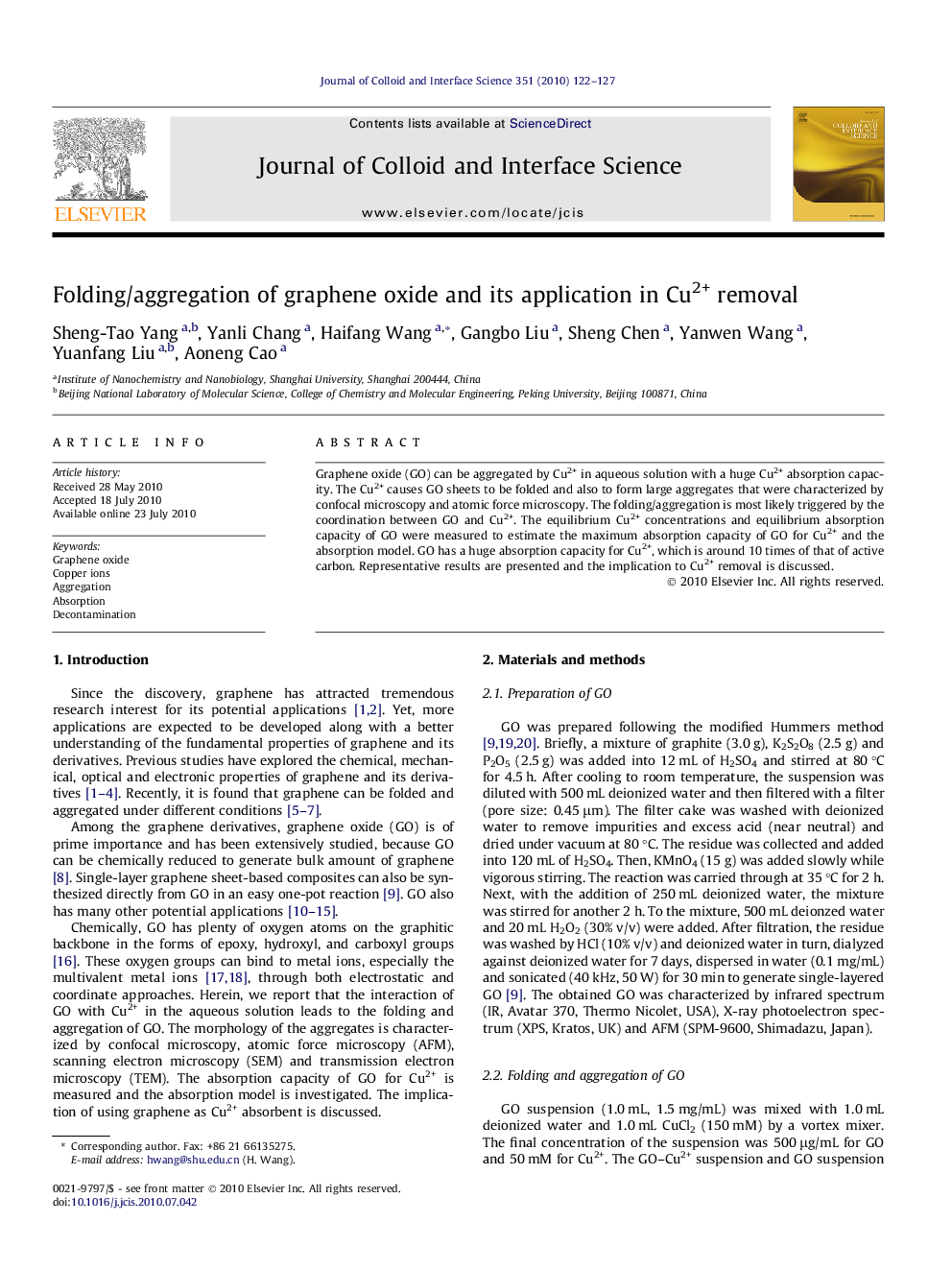| Article ID | Journal | Published Year | Pages | File Type |
|---|---|---|---|---|
| 609027 | Journal of Colloid and Interface Science | 2010 | 6 Pages |
Graphene oxide (GO) can be aggregated by Cu2+ in aqueous solution with a huge Cu2+ absorption capacity. The Cu2+ causes GO sheets to be folded and also to form large aggregates that were characterized by confocal microscopy and atomic force microscopy. The folding/aggregation is most likely triggered by the coordination between GO and Cu2+. The equilibrium Cu2+ concentrations and equilibrium absorption capacity of GO were measured to estimate the maximum absorption capacity of GO for Cu2+ and the absorption model. GO has a huge absorption capacity for Cu2+, which is around 10 times of that of active carbon. Representative results are presented and the implication to Cu2+ removal is discussed.
Graphical abstractGraphene oxide can be aggregated by Cu2+ in aqueous solution with a huge Cu2+ absorption capacity.Figure optionsDownload full-size imageDownload high-quality image (70 K)Download as PowerPoint slideResearch highlights► Cu2+ induces the folding/aggregation of graphene oxide. ► Coordination between graphene oxide and Cu2+ triggers the aggregation. ► Graphene oxide has a huge absorption capacity for Cu2+.
